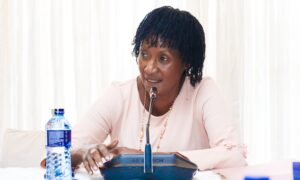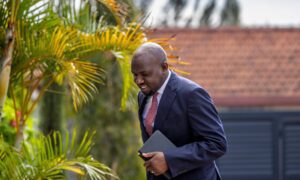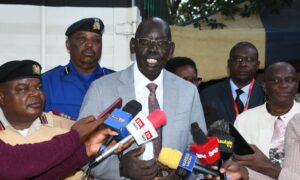In a dramatic move aimed at ending the persistent and disruptive power struggles within Kenya’s comprehensive schools, the Teachers Service Commission (TSC) has unveiled a proposed new administrative structure. This blueprint, revealed during a high-stakes Senate meeting, seeks to finally delineate the chain of command between primary school head teachers and junior secondary school (JSS) tutors, a conflict that has plagued the education sector since the inception of the Competency-Based Curriculum (CBC) reforms.
The Heart of the Conflict
The friction stems from the integration of the junior school section into existing primary schools in 2023, creating entities now unofficially dubbed “comprehensive schools.” By default, the primary school head teacher assumed the role of principal over the entire institution. However, this arrangement has been a source of immense tension. Junior school teachers, many of whom are trained for post-primary education, have often been accused of disrespecting and undermining the authority of head teachers, particularly those trained at the P1 level.
Ms. Antonina Lentoijoni, the TSC’s Director of Staffing, laid bare the challenge before senators. “We actually have a challenge there. Even our junior school teachers do not respect the heads, especially when they know that they are P1-trained teachers. But this is a transitional period,” she testified. This candid admission highlights a deep-seated professional hierarchy clash that has hampered smooth operations in schools nationwide.
The TSC’s Proposed Solution
The commission’s proposed structure is a direct response to these conflicts. The new model would see a single principal at the helm of the comprehensive school, supported by two deputies: one specifically for the primary section and another dedicated to the junior school section. This clear separation of roles is designed to grant junior school teachers the administrative autonomy they have been fiercely demanding through their unions, the Kenya Union of Post-Primary Education Teachers (Kuppet) and the Kenya Association of Junior School Teachers (KAJST).
Proponents argue that this system would prevent the current scenario where JSS teachers feel their career progression is stifled by reporting to primary school administrators, a situation they believe devalues their secondary-level training.
The Legal Hurdle
However, this promising solution is not immediate. Ms. Lentoijoni was quick to temper expectations, emphasizing that the new structure cannot be implemented until necessary legal amendments are passed by the National Assembly. “Before the laws are enacted to recognise comprehensive schools, the primary school head teachers are still in charge of the junior school,” she stated. For now, head teachers are operating under interim guidelines to manage the junior school sections while the legal framework catches up with the new educational reality.
The Ministry of Education has drafted the crucial Bills required to formalize comprehensive schools, but they remain pending, leaving the system in a state of legislative limbo.
The Massive Teacher Shortage Crisis
Beyond leadership squabbles, the meeting also exposed a critical issue crippling the junior school system: a severe teacher shortage. Ms. Lentoijoni revealed a staggering deficit of 72,442 teachers in junior schools nationwide. This shortage has arisen because the TSC has been forced to use outdated staffing norms designed for secondary schools, which are not fit for purpose under the new CBC structure.
The director provided a crucial update, stating, “We have now received all the guidelines from the Ministry of Education, which will enable us to determine the exact numbers.” This review of staffing norms, aligned with the recommendations of the Presidential Working Party on Education Reforms, is the first step toward accurately assessing and filling the massive staffing gap.
Qualified Primary Teachers to the Rescue
In a related development, the TSC defended its recent controversial decision to deploy 14,000 primary school teachers to junior schools. TSC acting Chief Executive Officer Eveleen Mitei explained this was a strategic move to address an acute shortage while leveraging a surplus of qualified tutors at the primary level.
Ms. Lentoijoni assured stakeholders that all deployed teachers meet the stringent qualifications required for JSS. “Junior school teachers must be qualified to teach in secondary schools,” she insisted, outlining the criteria: a minimum mean grade of C+ in the KCSE and a grade of C+ or higher in two teaching subjects. The deployed primary teachers reportedly met these benchmarks, ensuring educational standards are maintained despite the transitional challenges.
Political Pressure and Union Demands
The pressure for a resolution is mounting from all sides. The issue even spilled into State House over the weekend, where Kuppet Secretary-General Akello Misori was jeered by colleagues for suggesting that junior schools should be domiciled within secondary schools—a proposal unpopular with many teachers. This incident underscores the volatility of the debate.
President William Ruto, during that same meeting, directed Education Cabinet Secretary Ezekiel Machogu to fast-track the pending education Bills, signaling top-level political will to resolve the impasse.
The Path Forward
The TSC’s proposal represents the most concrete plan yet to bring order to Kenya’s comprehensive schools. It acknowledges the legitimate grievances of junior school teachers while attempting to create a sustainable management model. The ball is now in the court of lawmakers to pass the necessary legislation. Until then, schools remain in a precarious “transitional period,” relying on guidelines and the hope that a permanent, legal solution is on the near horizon. The resolution of this leadership row is crucial not just for teacher morale, but for the successful implementation of the CBC and the future of millions of Kenyan students.


























